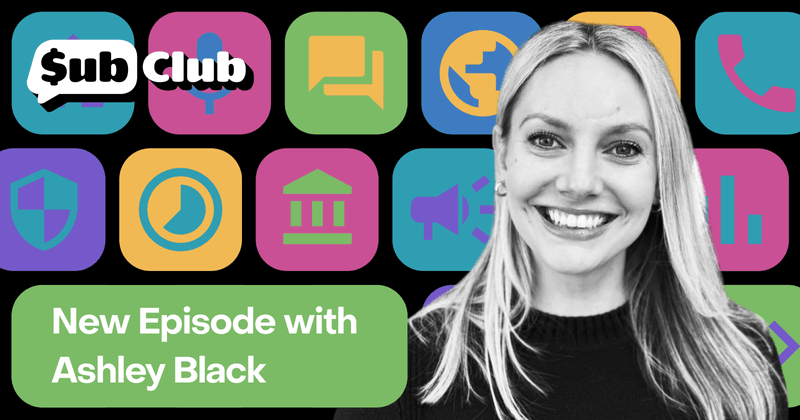Why Google App Campaigns is high reward, high maintenance — Ashley Black, Candid Consulting
Google’s ad platform offers huge growth potential... but only if you keep a close eye on where your budget is going

Ads are an important part of growing an app, and implementing the right strategy can make all the difference. TikTok, Meta, and Apple Search Ads are great places to serve ads to grow your app business, but many developers are sleeping on Google’s ad platform, Google App campaigns. Not only is Google the most popular search engine in the world, it also owns YouTube and the Google Play Store. Because of this enormous reach and access to high-intent audiences, Google App campaigns can be a major lever for app growth. But there’s a catch — Google doesn’t provide the same kinds of customization options and performance insights as other ad products do. So you really need to know what you’re doing to get good ROI on your Google campaigns.
To find out how to navigate the benefits and pitfalls of Google App campaigns, we recently chatted with Ashley Black, founder of Candid Consulting. With almost a decade of experience working at Google, Ashley now uses her insider expertise to help app businesses run effective Google marketing campaigns on Android and iOS.
Set it and (don’t) forget it
One of the biggest things to keep in mind with Google App campaigns is that you have to be fairly hands-on with it. The product uses a machine learning algorithm that places ads based on the provided budget. While this can be a good thing (the algorithm does a lot of the work for you), it doesn’t always optimize with your app’s best interests in mind. As Ashley points out, Google App campaigns blends high- and low-performing traffic, so your business might not be getting the most benefit out of your ad placements. For example, you might start to notice lower CPMs for your campaigns, which may sound like a good thing but might actually indicate a problem. “A lot of times cheaper CPMs mean worse traffic — not always, but a lot of times.”
Ashley recommends monitoring your ads and pulling any that aren’t serving you. “You do have to be on top of it,” she said. “You can — to some degree — see what sites, apps, or YouTube videos your ads are serving in… you can try to minimize [the low-performing placements] or try to increase the high-quality stuff.”
Slow and steady wins the race
For app developers who are just starting out with Google App campaigns, Ashley recommends starting with a fairly small budget. “On Android, anywhere from two to three hundred bucks a day (and about five hundred bucks a day on iOS),” she said. “That’s what I would probably want to spend on a daily basis to get enough information fast enough to actually be able to say, ‘Is this working, or what adjustments do I need to make?’” Once you’ve got a good sense of how your ad campaigns are performing and you’re ready to scale, Ashley recommends going slowly. The rule of thumb is to adjust your budget by no more than 20% a day. Too much more, and Google’s algorithm kicks into high gear and may start implementing strategies that don’t work as well for you.
Get creative with your creative
Since Google places ads across search, YouTube, and the Play Store, it’s important to provide the algorithm with a set of creative assets (text, videos, and images) that can be combined for each of these placements. “I aim for an 80/20 rule for images: 80 percent of them on Android I want to be in landscape, and then I’ll use the remaining 20 percent for square portrait (because landscape always gets more traffic).” One of the major drawbacks of Google App campaigns is that it doesn’t allow for direct A/B testing. To overcome this, Ashley recommends setting up multiple ad groups with distinct creative themes and monitoring how each one resonates with your audience. And if you’re looking for a little more insight or help with Google App campaigns, you can always call in the experts. With a significant increase to your budget, you can get access to a Google account manager, who can give you deeper insights into your ad placements and advice on how to improve performance.
To learn more about how to get the most out of Google App campaigns, check out our full conversation with Ashley on this week’s episode of the Sub Club Podcast.
You might also like
- Blog post
Is monetization hurting your app’s user experience?
Don’t trade short-term revenue for long-term trust. How ethical UX can still drive effective monetization.
- Blog post
Meta Ads in 2025: Expert tips from Marcus Burke
Marcus Burke discusses AI, UGC, and the lifespan of ad creatives.
- Blog post
The creative testing system that slashed our CAC (and scaled our spend)
We scaled Meta ad spend by 74.6% and dropped CAC 40%. Here’s how.

